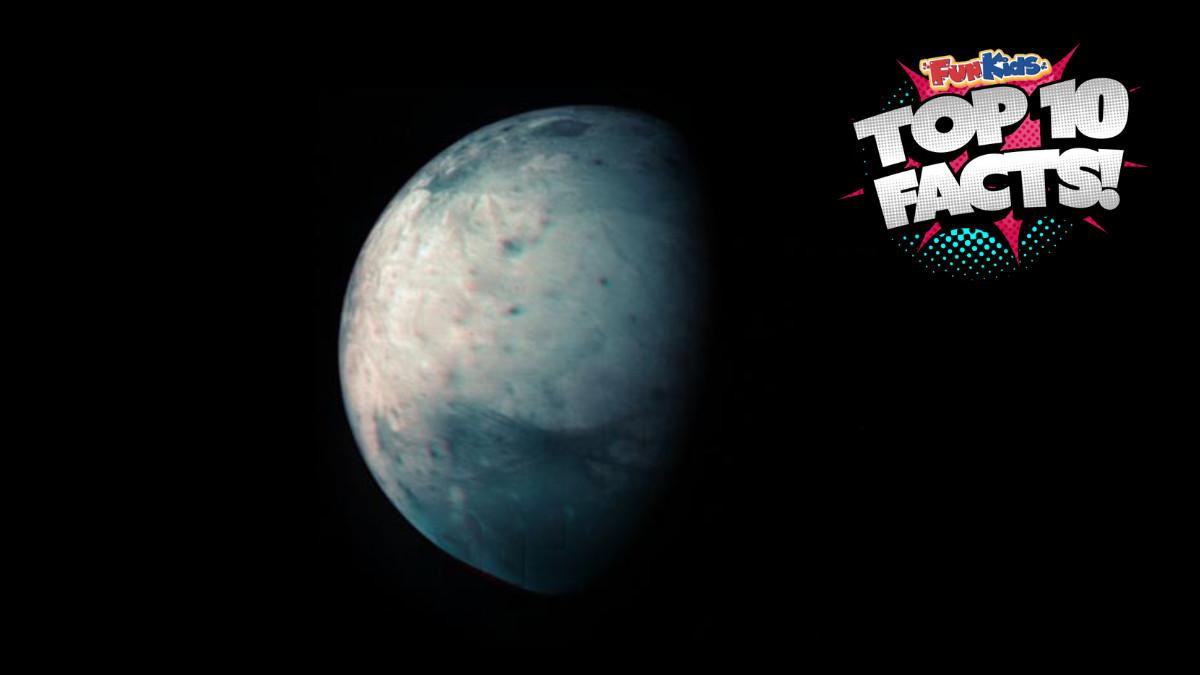Did you know that one of Jupiter’s moons is actually the biggest moon in the whole solar system? There are so many cool things about this amazing moon that make it one of the most interesting places in space. From its icy shell to its magnetic field, Ganymede is full of awesome surprises. So, let’s blast off and explore the Top 10 Facts about this gigantic moon!
1. Ganymede is the biggest moon in the solar system!
Ganymede is one of Jupiter’s many moons, and it’s biggest. It’s even bigger than the planet Mercury!
If Ganymede were going around the Sun instead of Jupiter, it could almost be considered a planet.
It’s a giant among moons!
2. It has a special icy shell.
Ganymede is covered with a thick layer of ice, kind of like a frozen pond.
Beneath that ice, there might be a huge ocean of water – maybe more water than all of Earth’s oceans combined!
3. It has its own magnetic field.
Most moons don’t have magnetic fields, but Ganymede does!
It’s like a force field that surrounds the moon, protecting it from some of the Sun’s radiation, just like Earth’s magnetic field does.
4. Ganymede has mountains and valleys!
Ganymede’s surface is filled with amazing landscapes—there are tall mountains, deep craters, and long valleys.
It’s like an outer space version of Earth’s rugged countryside.
Embed from Getty Images5. It’s super cold there!
The surface of Ganymede is freezing – about minus 160 degrees Celsius (or minus 256 degrees Fahrenheit)!
You’d need a seriously warm spacesuit to visit this icy world.
6. It’s named after a mythical boy!
Ganymede is named after a character from Greek mythology.
He was a handsome boy who was taken by Zeus, the king of the gods (who’s the same as Jupiter), to become the cupbearer to the gods.
Embed from Getty Images7. You could see it with binoculars!
If you point a pair of binoculars at Jupiter on a clear night, you might be able to spot Ganymede!
It’s so big and shiny that even simple equipment can catch a glimpse of it.
Embed from Getty Images8. There are cracks on Ganymede’s surface.
Ganymede has giant grooves and ridges across its surface, sort of like the cracks you see in an old pavement.
Scientists think these were made by shifting ice or water pushing up from beneath.
9. It might have its own auroras!
Like Earth’s northern lights, Ganymede has glowing light shows called auroras.
These happen because of the magnetic field interacting with particles from space.
Imagine seeing those dancing lights from Jupiter’s moon!
Embed from Getty Images10. It’s visited by spacecraft.
NASA’s Galileo spacecraft flew by Ganymede several times, taking pictures and collecting data.
In the future, more missions might visit to study its mysterious icy oceans.
Maybe one day, we’ll know if there’s life hidden in its waters!
Embed from Getty ImagesGanymede is full of exciting surprises, and it’s still being explored. Maybe you’ll be the next space explorer to learn something new about this giant moon!
Add a commentTop 10 Facts
From the Tudors to rocks to fish, we have all the best facts right here!
More From Top 10 Facts



